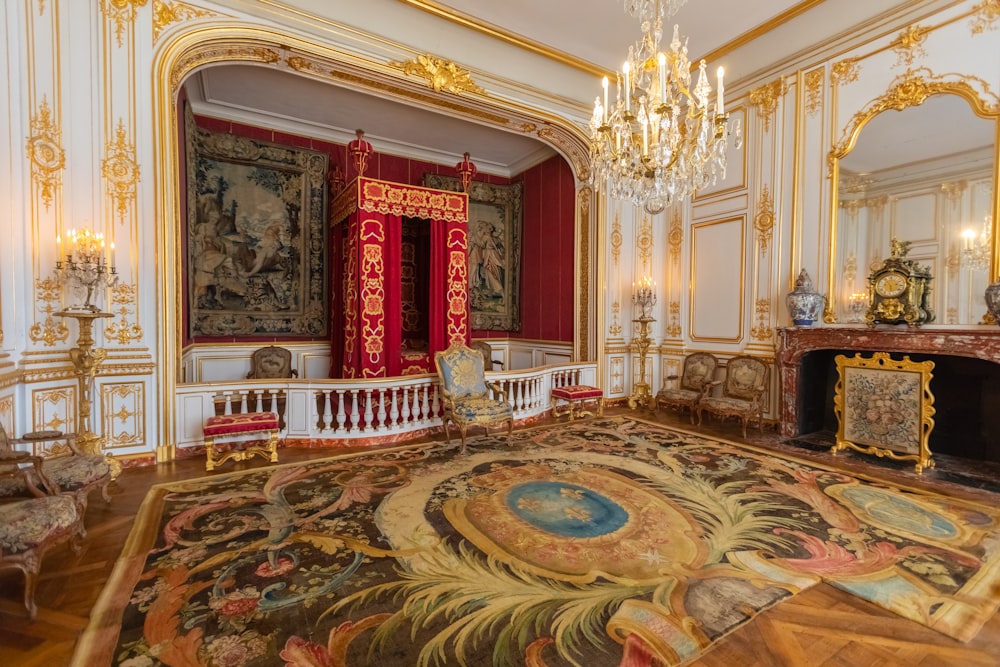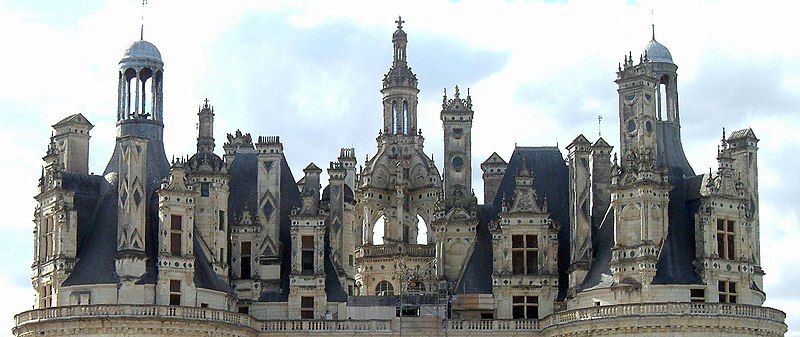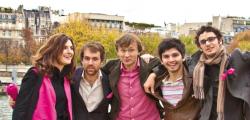
Photo by Dorian Mongel on Unsplash
Top 10 Interesting Facts about Chateau de Chambord
The Chateau de Chambord was built between 1519 and 1547 CE and is located in the Loire Valley of Loir-et-Cher, France. This fine French Renaissance building, although impressive in both size and architectural detail, was commissioned by Francis I of France (r. 1515-1547 CE) to function as a hunting lodge where the king and his entourage could pursue the abundant game in the surrounding forest.
The château is built on the same model as most mediaeval châteaux, with a central square building and a keep with four towers at each corner. There were five habitable levels with four square apartments and four apartments in the round towers on each level.
The only commune in France owned entirely by the state (since 1932), it lies in the 13,600-acre (5,500-hectare) National Hunting Reserve and Breeding Park, which is surrounded by the longest wall (20 miles [32 km]) in France. Its famed Renaissance château, with 440 rooms is the largest of the Loire group. In this article, you will discover the top 10 interesting facts about Chateau de Chambord.
1. The Royals did not use Château de Chambord much

Image by Jan Van Bizar from Pixabay
Chambord is the largest château in the Loire Valley; it was built to serve as a hunting lodge for Francis I, who maintained his royal residences at the Château de Blois and Amboise. Francis I, blessed Chambord with the symbol of his power and construction continued after his death.
As it was customary during the time the chateau was only furnished during the King’s visit. As a result 12, 000 horses were required to transport his luggage, servant and entourage when he came. During his 32-year reign, Francis 1 spent a total of only 72 days at the Chambord.
It wasn’t until the reign of Louis XIV that the building was completed, and converted into a proper château. However, Chambord continued to seduce crowned heads, welcoming the King of Poland (father-in-law to Louis XV) during his exile, as well the Marshal of Saxony, to whom we owe the French-style garden.
2. Revel at the Double Helix Staircase

Image by Zairon from Wikimedia
The famous double helix staircase is a highlight of your visit. Set in the central axis of the castle, it was a revolutionary design and an engineering masterpiece. An architectural curiosity that has contributed to the fame of Chambord.
The principle is simple but surprising, involving two spiral stairs that turn in the same direction but never meet. You can ascend on one side without meeting or making eye contact with those who are descending on the other side – now that’s entertainment.
Most people think Leonardo da Vinci was the designer and architect of this double staircase. François I and Leonardo had a strong bond, having met in Bologna. François invited Leonardo to stay in Val-de-Loire and gave him the manor of Clos Lucé to live in. He died there in 1519.
3. Explore Château de Chambord Restored French formal Gardens

Image by Zairon from Wikimedia
The 6.5 hectares of French formal gardens at the Château of Chambord have now been entirely restored after being destroyed during the inter-war period. Chambord once again boasts the splendid French formal gardens commissioned by Louis XIV and completed during the reign of Louis XV.
The flower beds were buried beneath a lawn, and it took 15 years of study and research to unearth their original design. Newly planted, the gardens comprise two ornamental flower beds bordered by lines of small-leaved lime trees.
The gardeners had to plant 600 trees, 800 shrubs, 200 rose bushes and 15,250 plants to go around the borders. Although the gardens have been restored to their original layout, the species planted have been modernised to ensure their longevity.
The restoration was made possible thanks to the patronage of Stephen Schwarzman, an American businessman with a strong penchant for French culture and who has already also provided financial support for works in the Musée des Arts Décoratifs and the Louvre.
4. The French Renaissance Architecture Construction took 25 years to Complete

Photo by Antonin Carvalho on Unsplash
The royal Chateau de Chambord at Chambord, Loir-et-Cher, France, is one of the most recognizable chateaux in the world because of its very distinctive which blends traditional French medieval forms with classical Renaissance structures. It is located between the untamed royal river and the wild woodlands, which is home to many boar and deer.
The building of the château was begun by Francis I in 1519 and was completed in 1547. The design itself can be attributed to various architects and influences during the 25 years including the input of Leonardo da Vinci. Many sources acknowledge that an Italian architect, Domenico da Cortona was the original designer. Chambord has 440 rooms, 84 staircases, 365 fireplaces and 800 sculpted capitals.
5. A Top Interesting fact about Chateau de Chambord is the Ornate Roof

Image by Christophe.Finot from Wikimedia
One of the architectural highlights is the ornate roof, the feature that makes Chateau de Chambord so instantly recognisable. At a glance, the roof is symmetrical but look closer and you will see that is not the case – among the numerous towers, light wells and decorative features there are many variations from left to right.
The façade of the château is huge, measuring about 128 meters (419 feet) long. It contains over 800 sculpted columns and the roofline is what you can describe as chaotic and lacks the typical spires and turrets that can be found in other structures built in the 16th century. The main reason is that King Francis I wanted the roofline to look like the skyline of Constantinople.
This castle would not be as imposing if it wasn’t for its roof. With its supposedly 365 chimneys it is more interesting to explore them all than to enjoy the wonderful views.
6. It’s a UNESCO World Heritage Site
If you’re interested in amazing-looking castles, then there’s hardly any better place than the Loire Valley. Over 300 châteaux can be found in this area just southwest of Paris and which has been declared a UNESCO Heritage site since 2000.
Famous castles include the Château d’Amboise, a royal castle extensively used by the French Monarchy, and the Château de Montsoreau, a Renaissance castle directly built in the Loire riverbed. Of all these castles, the Château de Chambord is the largest!
A World Heritage Site is a landmark or area with legal protection by an international convention administered by the United Nations Educational, Scientific and Cultural Organization. World Heritage Sites are designated by UNESCO for having cultural, historical, scientific or other forms of significance.
7. Don’t miss the Chateau de Chambord Horse Show

Photo by Yannick Herbreteau on Unsplash
Between May & September, it’s well worth watching the horse show which takes place on the grounds of the stables. See knights galloping on horseback recreating important events which occurred at the château. (Check before you visit though, as they don’t take place every day!)
The estate is equipped with footpaths, cycling and riding trails, and offers boat, buggy and SUV tours, but be sure not to forget to plan this year’s new ‘Horse and Birds of Prey’ show complete with breath-taking acrobatic stunts and combats – that takes place daily in the stables. The event is a sure-fire hit, not to be missed under any circumstances.
Practical Information
Open From: 9 April to 2 October 2022 at 11.45 am and/or 4 pm.
Every day from 05 July 2022 to 21 August 2022
Cost: 16€ per adult – 12,50€ from 5 to 17 years old
Combined adult ticket castle + show: 26€ (instead of 30€)
Chambord Passport: Special offer at €30 instead of €37 (adult)
8. The Kings Emblem in the Chateau de Chambord

Image by Shadowgate from Wikimedia
The emblem of King Francois I was a salamander. Look carefully, and you’ll see it carved into the walls, doors and ceilings throughout the palace.
At Chambord, the salamander, a small amphibian, as comfortable in the water as on land, is represented more than 300 times on ceilings and walls. The small creature was the emblem of Francis I with a crown and the motto “I eat the good fire, I put out the bad “. The motto refers to the popular belief had it that a salamander has the power to resist flames.
9. Chateau de Chambord is now the Property of the French Nation

Photo by Antonin Carvalho on Unsplash
The history of the castle following King Francis I’s death is rather sad because it hasn’t been a consistent residence of anybody for more than a decade at best. It immediately fell into disuse and was basically abandoned for the first 80 years until Louis XIV spent some money to renovate it and build a huge 1,200-horse stable.
He used the castle the same way as King Francis I and barely spent a few weeks there every year until he completely abandoned it in 1685 and spent most of his time at the Palace of Versailles. To make things even worse, the castle was completely stripped and even timber from floors was demolished to be sold during the French Revolution. The wooden doors were even used to heat the rooms during the sale.
It wasn’t until the year 1930, when it came into the hands of the French State, that the château found its true purpose, which was to become a popular tourist attraction after a serious renovation.
10. It was a depository of Artwork during the Second World War

Image by Thomas Staub from Pixabay
The château got a completely different purpose during World War II. From 1939 onwards, some of the most famous works of art from the Louvre Museum and other popular museums in France were stored there. These included some of the most famous works of art in the world such as the Mona Lisa and the Venus de Milo!
Chambord played a key role in preserving French masterpieces during the Second World War because the château was chosen as the main repository and processing centre for national treasures.
Fearing German attacks and pillaging, the main Paris museums organised an evacuation and conservation plan, and so, on 28th August 1939, the greatest convoy of paintings in history made its way to Chambord. The château was hit by an American bomber plane as it crashed and a fire during the war, but the artworks were all spared.

 English
English









